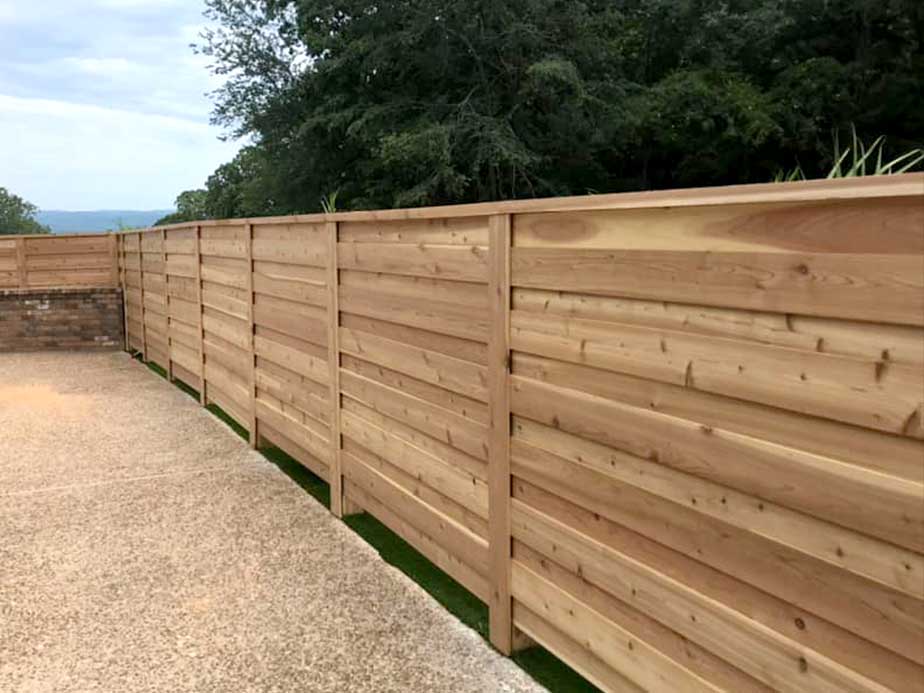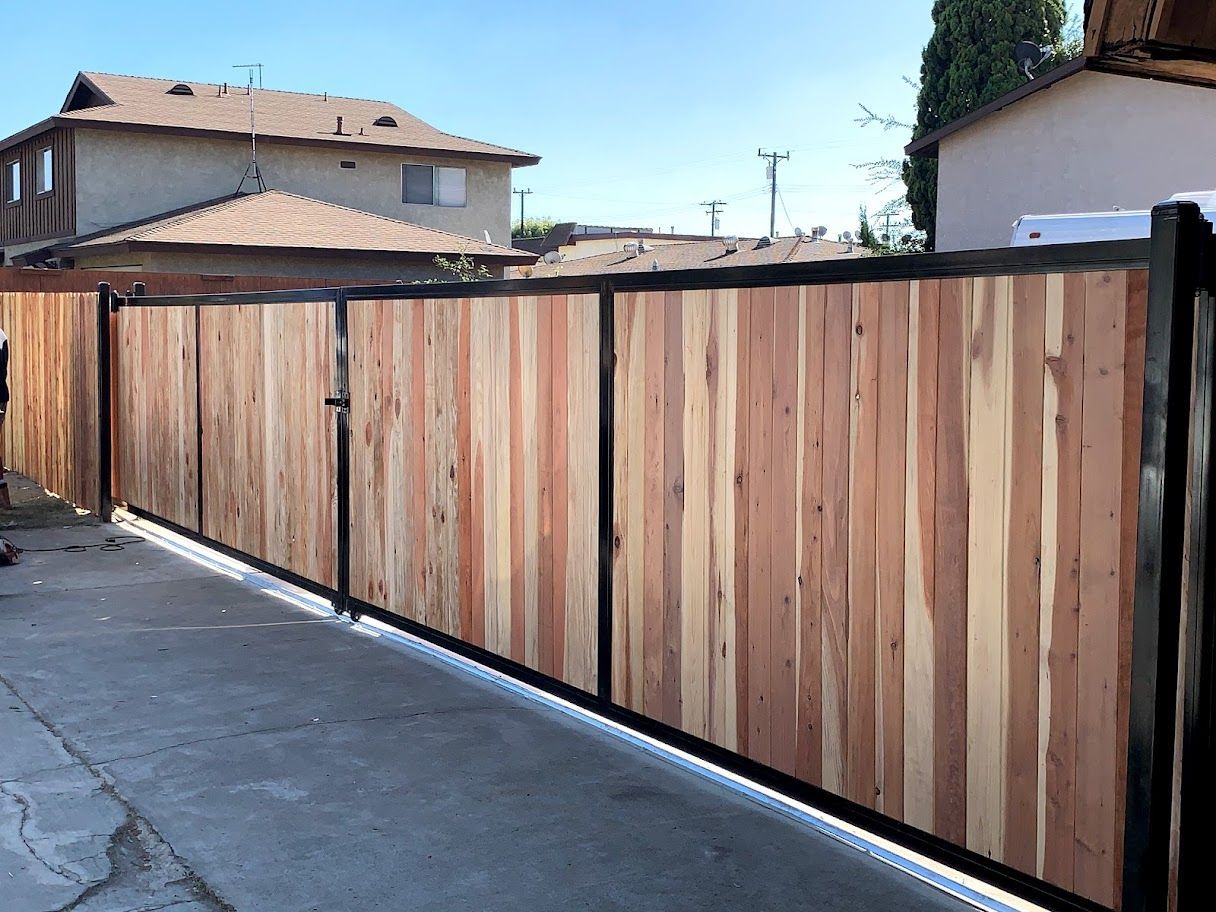All Categories
Featured
Your fencing is an investment that supplies personal privacy, visual, and safety and security allure. To keep it in excellent form, normal maintenance tailored to its product is essential. Each fencing type has unique maintenance needs based upon its product's longevity, exposure to the components, and other factors. Below's an extensive guide to preserving various secure fencing products.
![]()
Climate Security: Apply a high-quality sealer or stain every 2-- 3 years to protect the wood from dampness and UV rays. For extreme climates, annual reapplication might be needed. Cleaning: Make use of a garden hose pipe or a pressure washer on a low setup to eliminate dirt and mildew. Comply with up with a light cleaning agent for stubborn spots. Repair services: Check for loosened or rotting boards and replace them quickly. Tighten up nails or screws to keep the framework stable. Pest Control: Usage termite-resistant wood or treat the fence with insect repellents to avoid infestations. 2. Vinyl Fences. Plastic fencings are preferred for their longevity and marginal upkeep needs.
Cleaning: Wash the surface with a garden pipe or a mixture of soap and water to eliminate dirt and algae. For hard stains, make use of a soft-bristle brush or a vinyl-specific cleaner. Examinations: Routinely evaluate for fractures or bending, especially after solid winds or hefty effects. Repairs: Replace any kind of damaged areas quickly. Plastic fences commonly use modular elements, making fixings uncomplicated. 3. Chain-Link Fences. Chain-link fencings are tough and cost-effective but need periodic focus to prevent corrosion.
Corrosion Removal: Use a cable brush to remove rust from subjected areas, then apply a rust-inhibiting spray to shield the metal. Cleaning: Hose down the fence frequently to get rid of dirt. For gunk, usage soapy water and a stiff-bristle brush. Repairs: Tighten any type of sagging sections or change damaged web links to keep safety. 4. Wrought Iron Fences. Wrought iron fencings offer sturdiness and sophistication but are susceptible to corrosion if not correctly preserved.
![]()
Rust Prevention: Remove rust areas with sandpaper and apply a rust-resistant primer followed by exterior steel paint. Check for corrosion a minimum of two times a year. Cleaning: Wipe down with a cloth and soapy water to preserve the surface. Prevent abrasive cleaners that can damage the surface area. Painting: Repaint every few years to shield the metal from deterioration and maintain it looking fresh. 5. Light weight aluminum Fences. Aluminum fencings are light-weight, resilient, and immune to rust, needing much less maintenance contrasted to functioned iron.
Cleaning: Clean with soap and water to get rid of dirt and dust. Wash thoroughly to protect against deposit. Assessments: Examine for loose hardware or damages, particularly after storms. Protect or change components as needed. Touch-Ups: Use paint to damaged or chipped locations to avoid damage to the protective covering. 6. Composite Fences. Compound fencings are made from a blend of wood and plastic, combining resilience with minimal upkeep.
![]()
Cleaning: Use a hose pipe or a soft brush with soap and water to clean the surface area. Avoid utilizing severe chemicals. Inspections: Look for warping, especially in severe warm. Tighten or replace any type of damaged panels. Mold Prevention: While composite products withstand rot, maintain the fencing tidy and completely dry to prevent mold and mildew accumulation. 7. Bamboo Fences. Bamboo is an environmentally friendly option but needs mindful upkeep to keep its look and longevity.
Securing: Apply a safety sealer or varnish every 2-- 3 years to defend against dampness and UV damage. Cleansing: Tidy with mild soap and a soft sponge or brush. Avoid high-pressure cleaning, which can harm bamboo fibers. Fixings: Replace harmed areas or posts to keep structural honesty and appearance. General Upkeep Tips for All Fencing Types. Routine Inspections: Check your fencing at the very least as soon as every season for damage, wear, or loosened parts. Trimming Plants: Maintain vines, hedges, and plants far from the fence to stop dampness damage and lessen pest task. Seasonal Modifications: In areas with snow, stay clear of piling snow against your fencing to avoid structural tension. In hot climates, check for heat-related warping or fading. Final thought. Each fence material has its distinct upkeep needs, yet an aggressive method to care can expand its life expectancy and maintain it looking its best. Wood fences require more attention compared to plastic or aluminum, yet each product gain from normal cleansing, assessments, and timely fixings. By tailoring your maintenance practices to the type of fencing you have, you'll ensure that it remains to offer safety, privacy, and curb allure for years ahead.

- Wooden Fences. Wooden fencings are valued for their all-natural appearance yet call for consistent upkeep to protect against damage.
Climate Security: Apply a high-quality sealer or stain every 2-- 3 years to protect the wood from dampness and UV rays. For extreme climates, annual reapplication might be needed. Cleaning: Make use of a garden hose pipe or a pressure washer on a low setup to eliminate dirt and mildew. Comply with up with a light cleaning agent for stubborn spots. Repair services: Check for loosened or rotting boards and replace them quickly. Tighten up nails or screws to keep the framework stable. Pest Control: Usage termite-resistant wood or treat the fence with insect repellents to avoid infestations. 2. Vinyl Fences. Plastic fencings are preferred for their longevity and marginal upkeep needs.
Cleaning: Wash the surface with a garden pipe or a mixture of soap and water to eliminate dirt and algae. For hard stains, make use of a soft-bristle brush or a vinyl-specific cleaner. Examinations: Routinely evaluate for fractures or bending, especially after solid winds or hefty effects. Repairs: Replace any kind of damaged areas quickly. Plastic fences commonly use modular elements, making fixings uncomplicated. 3. Chain-Link Fences. Chain-link fencings are tough and cost-effective but need periodic focus to prevent corrosion.
Corrosion Removal: Use a cable brush to remove rust from subjected areas, then apply a rust-inhibiting spray to shield the metal. Cleaning: Hose down the fence frequently to get rid of dirt. For gunk, usage soapy water and a stiff-bristle brush. Repairs: Tighten any type of sagging sections or change damaged web links to keep safety. 4. Wrought Iron Fences. Wrought iron fencings offer sturdiness and sophistication but are susceptible to corrosion if not correctly preserved.

Rust Prevention: Remove rust areas with sandpaper and apply a rust-resistant primer followed by exterior steel paint. Check for corrosion a minimum of two times a year. Cleaning: Wipe down with a cloth and soapy water to preserve the surface. Prevent abrasive cleaners that can damage the surface area. Painting: Repaint every few years to shield the metal from deterioration and maintain it looking fresh. 5. Light weight aluminum Fences. Aluminum fencings are light-weight, resilient, and immune to rust, needing much less maintenance contrasted to functioned iron.
Cleaning: Clean with soap and water to get rid of dirt and dust. Wash thoroughly to protect against deposit. Assessments: Examine for loose hardware or damages, particularly after storms. Protect or change components as needed. Touch-Ups: Use paint to damaged or chipped locations to avoid damage to the protective covering. 6. Composite Fences. Compound fencings are made from a blend of wood and plastic, combining resilience with minimal upkeep.

Cleaning: Use a hose pipe or a soft brush with soap and water to clean the surface area. Avoid utilizing severe chemicals. Inspections: Look for warping, especially in severe warm. Tighten or replace any type of damaged panels. Mold Prevention: While composite products withstand rot, maintain the fencing tidy and completely dry to prevent mold and mildew accumulation. 7. Bamboo Fences. Bamboo is an environmentally friendly option but needs mindful upkeep to keep its look and longevity.
Securing: Apply a safety sealer or varnish every 2-- 3 years to defend against dampness and UV damage. Cleansing: Tidy with mild soap and a soft sponge or brush. Avoid high-pressure cleaning, which can harm bamboo fibers. Fixings: Replace harmed areas or posts to keep structural honesty and appearance. General Upkeep Tips for All Fencing Types. Routine Inspections: Check your fencing at the very least as soon as every season for damage, wear, or loosened parts. Trimming Plants: Maintain vines, hedges, and plants far from the fence to stop dampness damage and lessen pest task. Seasonal Modifications: In areas with snow, stay clear of piling snow against your fencing to avoid structural tension. In hot climates, check for heat-related warping or fading. Final thought. Each fence material has its distinct upkeep needs, yet an aggressive method to care can expand its life expectancy and maintain it looking its best. Wood fences require more attention compared to plastic or aluminum, yet each product gain from normal cleansing, assessments, and timely fixings. By tailoring your maintenance practices to the type of fencing you have, you'll ensure that it remains to offer safety, privacy, and curb allure for years ahead.
Latest Posts
Preventative Maintenance at Montclare Auto Repair: Protect Your Vehicle Operating Like New
Published Apr 20, 25
2 min read
Find Out the Montclare Promise - Trusted Auto Service
Published Apr 19, 25
2 min read
Personalized Wealth Monitoring with WyHy Federal Credit History Union
Published Apr 19, 25
1 min read
More
Latest Posts
Preventative Maintenance at Montclare Auto Repair: Protect Your Vehicle Operating Like New
Published Apr 20, 25
2 min read
Find Out the Montclare Promise - Trusted Auto Service
Published Apr 19, 25
2 min read
Personalized Wealth Monitoring with WyHy Federal Credit History Union
Published Apr 19, 25
1 min read